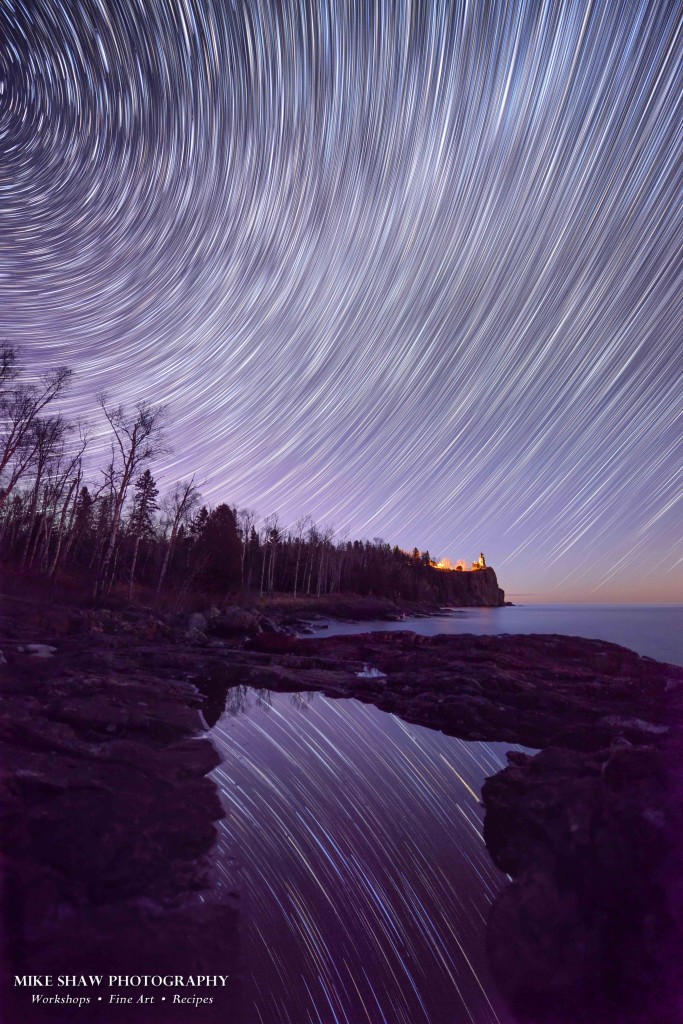
As the earth rotates about its axis, everything in the sky – the sun, moon, stars all appear to move across the sky. For observers in the northern hemisphere, this rotation is why the sun rises in the east and sets in the west. Similarly at night, stars rise in the east, curve across the southern horizon and set in the west. Also at night, when facing north, stars simply circle around the North Star, or Polaris, in a counter-clockwise direction.
This wide-angle star trails image, made with a 14-mm lens on a Nikon full-frame camera, shows a little of both. It was made in early May, facing approximately east-northeast on the edge of Lake Superior in Minnesota. Stars circling around Polaris (left) as well as stars rising above the eastern horizon (right) are both captured. The wide-angle lens allowed for the camera to be positioned just next to a large pool of water, so that starlight is reflected beautifully by the still water. Famous Split Rock Lighthouse is also seen just next to the horizon. The first glow of daylight is beginning to paint the eastern horizon as well.
This image was made by stacking 132 individual images together using the techniques discussed in our Star Trails and Night Photography course. The exposure settings were 6400 ISO, 20-sec shutter and f/2.8 aperture. The first step to creating this image was the process of pre-visualization – to mentally construct how the image would look once the individual images were stacked. While the star reflections were quite dim in the individual images, I was confident that they were combined, the reflections would stand out, which they do. The soft glow of the Milky Way galaxy produced a nice effect in the sky above the lighthouse. The second step in creating this image, as discussed at length in the course, is the need to plan in advance and scout out the shooting location ahead of time, preferably during the day. As is the case in most avenues of photography, planning pays off!










